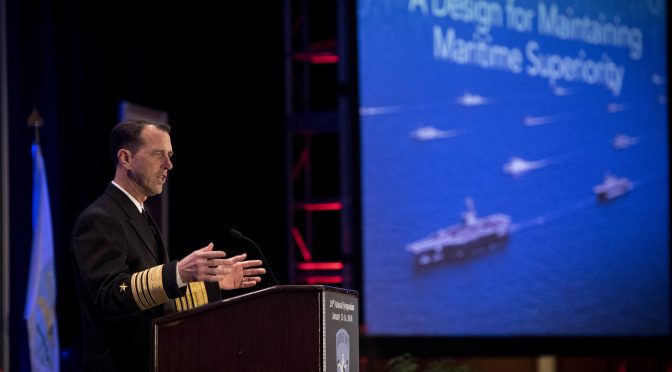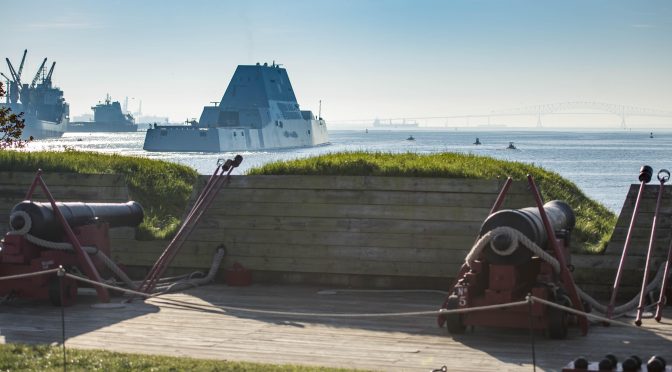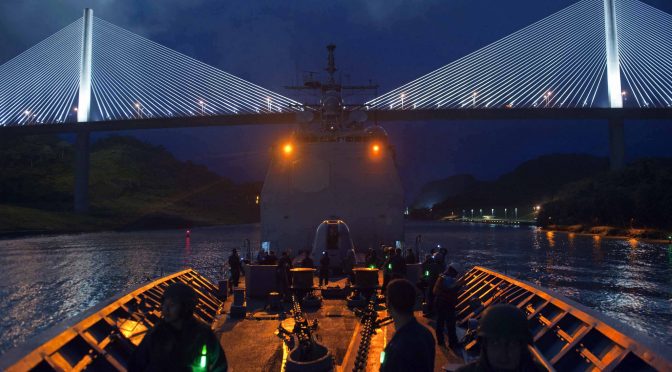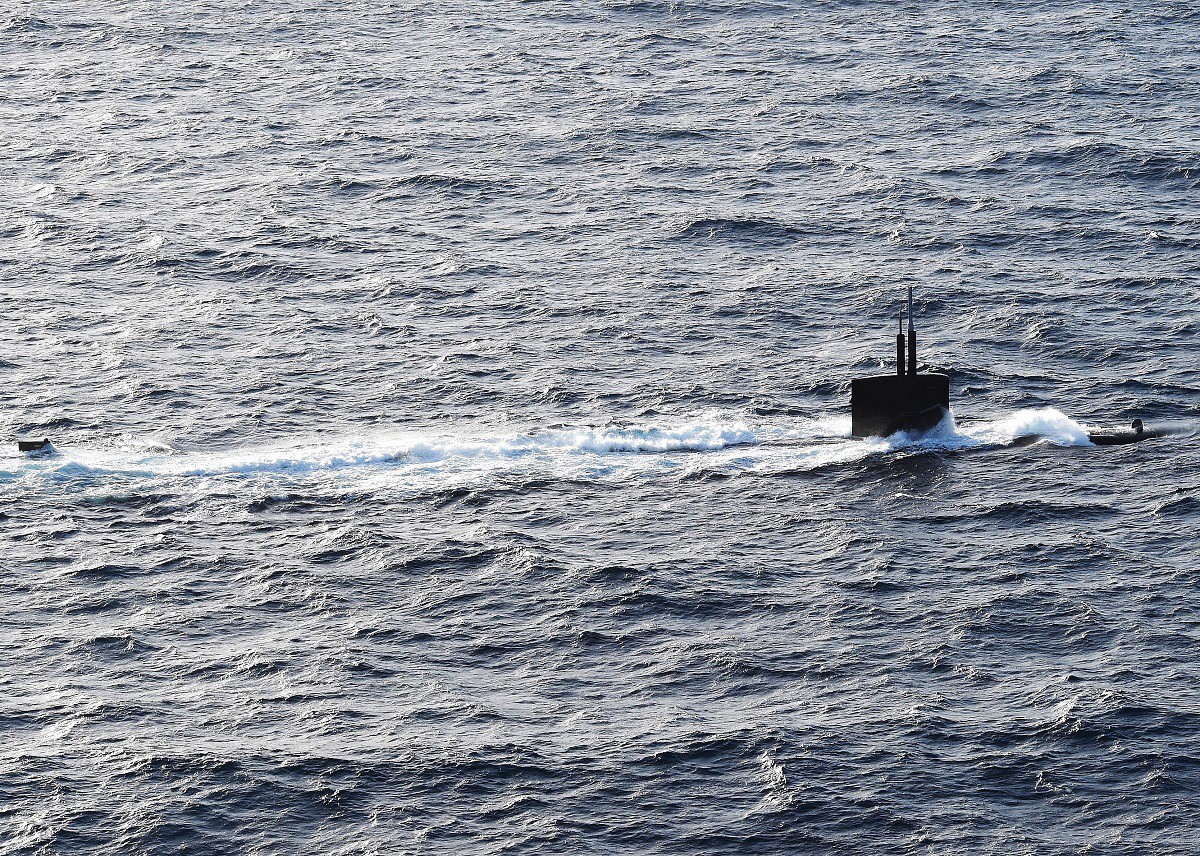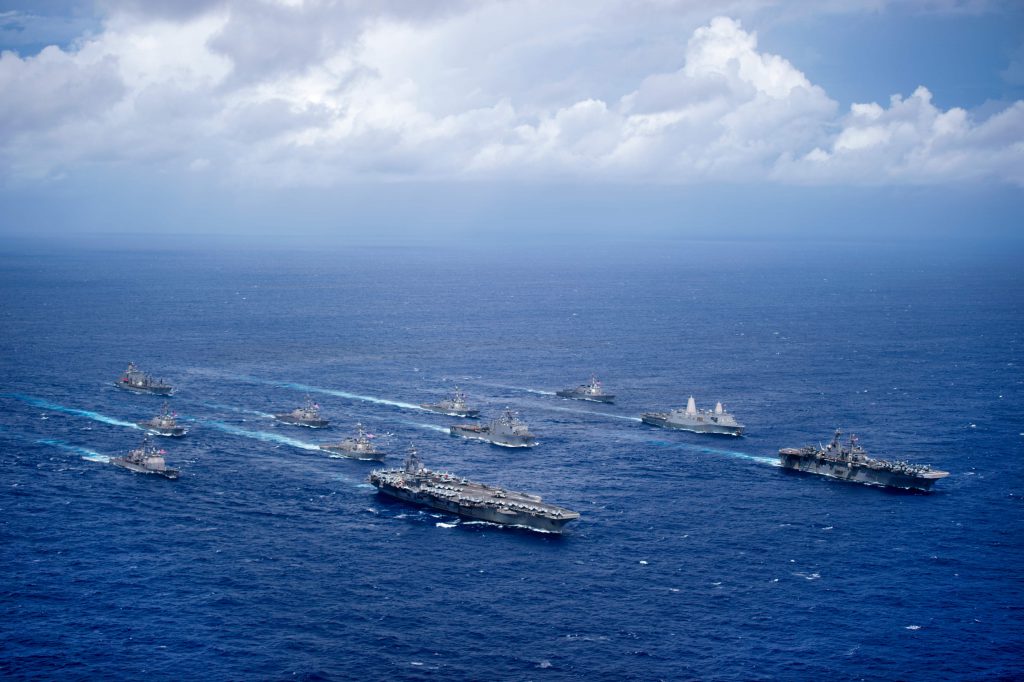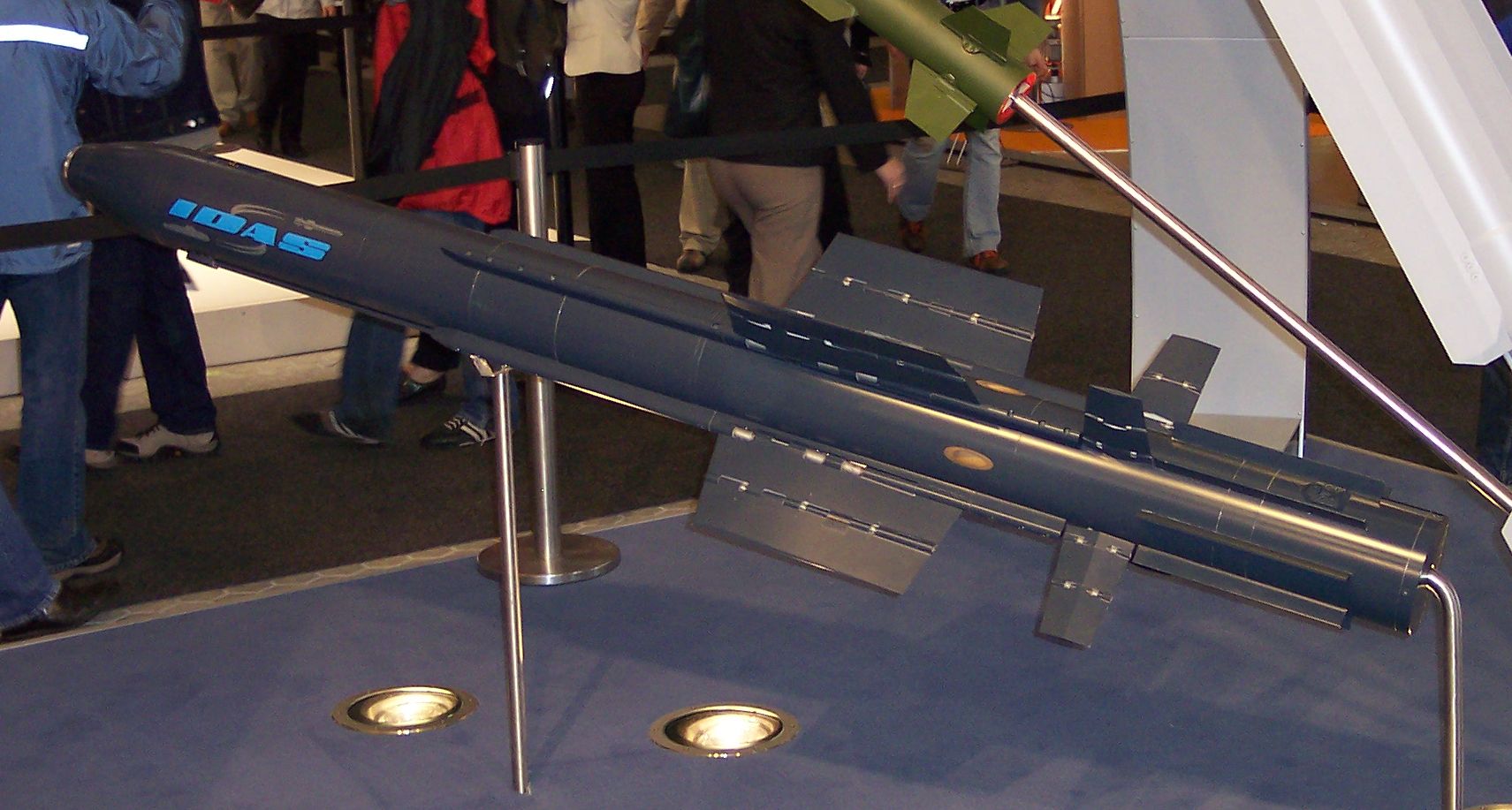By Steve Wills
Introduction
Newly appointed U.S. Navy Secretary John F. Lehman Jr. gave a signature speech at the Naval War College in Newport, RI in 1981. In his remarks Lehman hailed, “the return of naval strategy” to the forefront of the Navy’s planning.1 Such a message was again issued last week by Chief of Naval Operations Admiral John Richardson. While the CNO’s 18 October naval message (R 182128Z OCT 16) did not have Secretary Lehman’s dramatic turn of phrases, it is no less important and in fact is the most significant change in the role of U.S. naval strategic thinking since late 1991. The CNO’s message implements a major change in the planning and execution of the annual Navy budget statement known as the Program Objective Memorandum (POM.) For the first time since July 1991, the Navy Staff (OPNAV) Operations, Plans and Strategy (N3/N5) office will have the first input to the Navy POM building process. While this may not seem significant at first glance, it is a major course correction in Navy thinking. It could signal a return to the halcyon days of the 1980s when the Navy’s Maritime Strategy served as the service’s global blueprint for operational naval war against the Soviet Union, informing Navy programs, budgets, exercises, war games, education, training, and real world operations.
POM and Strategy Evolution Through the Cold War
The POM was created in 1970 by President Richard Nixon’s Defense Secretary Melvin Laird. It was designed as a response to what was seen as overbearing domination of service programming by the Office of the Secretary of Defense (OSD) in the Kennedy and Johnson administrations under Defense Secretary Robert S. McNamara.2 The POM was prepared by service rather than Defense Department analysts and was seen as a better way to allow the services to plan for their own futures. The Navy POM was controlled largely by the CNO’s OP 090 programming and budget directorate with the powerful systems analysis divison OP 96 in the lead for the development of Navy programs and associated budgets.
The system remained in place across the 1970s as a trio of influential CNOs brought about the conditions for what Navy strategist Captain Peter Swartz and naval historian John Hattendorf have called, “A renaissance in naval strategic thinking,” that occurred in the 1980s.3 Admirals Elmo Zumwalt Jr, James Holloway III, and Thomas Hayward all explored ideas for global naval strategy against a growing and more capable Soviet fleet. Admiral Zumwalt conducted a major reorganization of the Navy Staff (OPNAV) and worked to create an affordable yet capable fleet to confront its Soviet counterpart. Admiral Holloway explored differing fleet sizes and offensive concepts. Admiral Hayward had conducted significant research into a new offensive naval strategy while serving as the Pacific Fleet Commander. He further tried to reintroduce a strategic culture through the creation of a Naval War College-based, CNO strategy “think tank” called the CNO Strategic Studies Group (SSG) to create operational solutions to naval strategic problems.4 All three of these extraordinary CNOs worked to restore the Navy from its post-Vietnam War doldrums. They laid the groundwork for success in the 1980s, but faced severe policy and budget restraints and did not have optimum mechanisms to translate their naval strategy concepts into solutions acceptable to civilian leaders.
In August 1982, with a new presidential administration in power and a new CNO at the helm of the Navy, Deputy CNO Admiral Small sent an influential message to both the Navy’s strategy (OP 06) and Director of Naval Warfare (OP 095) offices with a powerful instruction. To this end, Admiral Small (and presumably CNO Admiral James Watkins) adjusted the Navy POM process to give the Strategy branch the first “cut” on the POM building process as opposed to the OP 96 systems analysis branch. Small had been exploring this change for some months. In March 1982, he sent a memo to OP 06 Vice Admiral Sylvester “Bob” Foley in which he stated, “A review of maritime strategy may well change many of the assumptions currently explicit in our systems requirements. I guess the responsibility for this type of thinking lies somewhere between (or among) OP-06 and OP-095, but seems dormant.”5 The Director of Naval Warfare (OP 095) Rear Admiral W.R. Smedberg IV suggested that, “OP-06 take the lead in this action” and that the strategic setting and operational concept should be spelled out more explicitly as the backdrop of our POM development.” The Navy Programming and Budgeting Director (OP 090) Vice Admiral Carl Trost and the systems analyst division head Rear Admiral Jack Baldwin agreed with Small’s statements. Small submitted an August 1982 memo to, in his words, “Get the whole OPNAV staff moving in that direction (of strategic thinking in POM development).”6 In a 1998 letter, Small recounted that he, “had been increasingly perturbed by a lack of any relationship of POM development to any kind of maritime strategy, not only from an affordability standpoint, but the concomitant failure to challenge the assumptions made by program and platform sponsors.”7
Small’s memo set in motion a historic series of events. If strategy were to play a part in the 1983 POM process, a strategy briefing would need to be prepared in support of the Navy POM input. The OPNAV Strategic Concepts branch head (OP 603) Captain Elizabeth Wylie was ordered to prepare such a strategy appraisal. She selected Lieutenant Commander Stanley Weeks, who was assisted by Commander William Spencer Johnson from OP 605, in preparing this input. Weeks and Johnson’s document became the first iteration of the 1980s Maritime Strategy, which grew in sophistication and influence throughout the early and mid 1980s.
Strategy Adrift in the Post Cold War Era
A Maritime Strategy appraisal (CPAM) remained the first input to the POM process through 1991, but by then the global strategic system had been turned upside down. The passage of the Goldwater Nichols Act of 1986, the collapse of the Warsaw Pact, the end of the Cold War, Desert Storm operational practices, and the looming fall of the Soviet Union itself had precipitated significant changes. The Goldwater Nichols legislation had given the Chairman of the Joint Chiefs of Staff rather than the CNO control of the size and strategy of the fleet, although these powers would not be fully invoked until the accession of General Colin Powell to the chairmanship of the Joint Chiefs in 1989. The collapse of the Soviet opponent further weakened the need for the Maritime Strategy. By the spring of 1990, incoming CNO Admiral Frank Kelso was forced to concede that there was no need for a Maritime strategy in the absence of a great maritime enemy like the Soviet Union. He officially declared the 1980s Maritime strategy as “on the shelf” until again needed during his June 1990 Senate confirmation hearing as CNO.8
Between 1990 and 1991, the Maritime Strategy was replaced by the White Paper Revision, later known as “From the Sea,” as the opening assessment for the POM process. Admiral Kelso later suggested that “From the Sea” would play a similar role to that of the 1980’s Maritime Strategy in getting the Joint Staff, Congress and the Office of the Secretary of Defense to support, “The Navy’s job in the years ahead of us.”9
The new strategy was used in a method similar to its predecessor at the start of its existence. Many of its components were incorporated into a Total Force Assessment (TFA) brief scheduled for the CNO Executive Board (CEB) as a kickoff to the POM cycle by Captain Dick Diamond (OP 603 Branch Chief) to Admiral Kelso on 18 July 1991. Diamond’s brief was undercut at the last minute by an additional slide produced by RADM Dave Oliver’s OP 81 (systems analysis) office entitled, “The Coming USN Budget Train Wreck” that Oliver insisted be inserted into Diamond’s brief. Diamond recalled that Admiral Kelso did not like the littoral warfare focus of Diamond’s presentation and exploded when the OP 81 slide suggesting the Navy would shrink to less than 300 ships by 2010 was displayed.10 Admiral Kelso called Diamond into his office the next day and reversed course, stating that, “the brief was essentially correct and what you recommended is the right path ahead for the Navy…so I am going to do it.”11
Reorganizing OPNAV
The new strategy appeared to have CNO support as a POM influencer, but this condition was only temporary. Over the summer of 1992, Admiral Kelso responded with the most significant reorganization of the OPNAV staff since Admiral Zumwalt’s two decades earlier.12 In a 1994 USNI Proceedings article, Admiral William Owen, Kelso’s lead for the reorganization effort, suggested the reason for Kelso’s massive staff restructure was to implement this new strategy.13 Admiral Kelso stated in his Reminiscences of 2009 that the strategy was merely a rally point behind which Owens as the new N8 would organize programs and their funding.14
The OPNAV staff would now be organized by “N” codes along the Army-centric lines of the Joint Staff. The OP 08 programming office under the leadership of Admiral Owens was re-branded as the N8 and all Navy programmatic activity was effectively centralized under his control. Its primary management tool, the Joint Mission Assessment, was an analysis-driven document, developed by OPNAV flag officers and coordinated by the N81 (formerly OP 81) analysis office. The three star platform “barons” were downgraded to two stars and subordinated to N8.
The OP 603 office had previously conducted its strategy appraisal of the POM as part of the CNO Executive Board Review (CEB) prior to the other POM appraisals. The CEB was disestablished as part of the October 1992 OPNAV reorganization. The list of POM development assessments conducted before the 1992 reorganization includes a “White Paper Revision,” also known as “From the Sea,” described as a successor to the Maritime Strategy. Subsequent lists of POM development assessments make no mention of a strategy assessment.
The apparent demise of a direct service strategy input to the POM in 1992 was paralleled by a rise in the influence of systems and campaign analysis in POM development and management. In 1994, when recruited by CNO Admiral Mike Boorda to work in N81 analysis branch, veteran Navy operations analyst Bruce Powers said Boorda desired, “To revitalize N81 and turn it back into what OP 96 had been earlier.”15
The new analysis branch (formerly OP 81) N8 in time became even more powerful than the old OP 96 office over the next decade. In 2000, Admiral Vern Clark, a 1970s-era alumnus of the OP 96 office, succeeded Admiral Jay Johnson as CNO.16 Clark was a former Joint Staff Operations officer (J3), its director, and the first business school graduate to be appointed CNO. Clark believed that strategy properly belonged to OSD and the Joint system. His own job as a service chief was to manage the organization, training, and equipment provision to the service. Clark desired a “readiness-based” Navy; especially after the 9/11 terrorist attacks.17
Strategy Struggles
The N3/N5 (Deputy CNO for Plans, Policy and Operations) office attempted to get back into the business of influencing the POM in the 1990s and in the 2000s. In 1994, N3/N5 RADM Phillip Dur and his N51 Captain Joe Sestak attempted to improve the 1992 “From the Sea” White Paper with a successor document entitled “Forward From the Sea.” While it had some initial success, it did not achieve any influence in POM development since it was still focused on “blue water” programs and did not “Script a convincing story about how a littoral strategy works.”18 It was further criticized as just a repeat of the Navy’s Cold War presence operations and provoked backlash from the Army and Air Force due to its, “Parochial focus on uniqueness of naval forward presence.”19 “Only “boots on the ground,” combined with robust land-based (as opposed to carrier-based,” aviation could actually influence others.20 Although useful for two years in shaping the Navy POM, it did not achieve lasting influence.21 Further attempts by the N3/N5 office to influence the POM including a Navy Operational Concept, and the Navy Strategic Planning Guidance for POMs 02 and 03 were short-lived and failed to develop lasting influence on the budget cycle. They were greatly overshadowed by Department of Defense strategic initiatives such as the First Quadrennial Review (QDR) and increasing attempts at joint operations.22
In 2002, Admiral Clark told Vice Admiral Kevin Green, the incoming N3/N5 that the Navy did not need a “strategy,” as it already had one and it was called the POM.23 Admiral Clark assigned control of the Navy’s 30-year shipbuilding plan to N81 in 2000.24 The N81 office was also instrumental in developing the Global Concept of Operations (CONOPS) for Admiral Clark’s “Sea Power 21” concept.25
The decade of the 2000s was more successful in terms of re-asserting the influence of strategy on the OPNAV staff. Admiral Mike Mullen became CNO in 2005. Vice Admiral John Morgan was N3/N5 from 2004-2008 and had more success than Vice Admiral Green in pushing strategy documents to a wider audience, but was still outpaced by N81 in terms of POM influence. The Navy Operating Concept for Joint Operations, written by N513 (the strategy office of N3/N5) by contrast was little cited in either POM documents or within the press.
Succeeding strategy documents were also ineffective. The Navy Strategic Plan in support of POM 08 (2006) was signed out six months too late to be of significant influence on its intended POM cycle.26 The Strategic Plan for POM 10 (2007) had some influence in the development of the 2007 Cooperative Strategy for 21st Century Seapower. It was deliberately targeted at Navy Department programmers supporting POM development.27 It had extensive support from N81 including influential officers such as Commander Bryan Clark and Captain John Yurchak to ensure it “fit with the OPNAV POM process.”28 However, this document was Secret only and did not get wide distribution as a result. Unfortunately, the POM 10 Strategic planning effort was lost to a degree in the turmoil of the end of the Bush administration during which operations in Iraq and Afghanistan dominated Defense Department thinking.29 It reflected current and near-term Navy programming already in place rather than attempted to influence future efforts. It did not include the Marine Corps, and had no mechanism to secure OPNAV support, as did the N8 /N81 POM development process.30
Admiral Morgan’s greatest triumph was perhaps the 2007 Cooperative Strategy for 21st Century Seapower. It was championed by CNO Admiral Mullen and drafted by N3/N5 staff member Commander Bryan McGrath, and writers from the other sea services. The 2007 Cooperative Strategy was designed as a tri-service effort in support of POM 12.31 The document had widespread influence in the wider U.S. and international naval community, but again failed to have a significant impact on its intended POM target. Despite its influence, the 2007 document had no direct connection with POM development, unlike the pre-1992 Maritime Strategy CPAM inputs to the POM process.32 The distinct lack of a formal relationship between strategy and the programming process allowed Navy programmers to ignore strategic input from 1992 through the beginning of the second decade of the 21st century.
By contrast, the N81 analysis branch’s formal connection to the programming process has allowed it wide influence.33 Since 2000, the 30-year shipbuilding plan has in effect served as the Navy’s de facto strategy document. Its key supporting element is the Naval Force Structure Assessment (FSA). The FSA is described in OPNAV Instruction 3050.27 (12 February 2015), as a tool that, “determines long-term Navy force structure objectives to support a global posture of distributed mission-tailored ships, aircraft, and units capable of regionally concentrated combat operations and peacetime theater security cooperation efforts.”34 The 2012 FSA was used to, “determine a post-2020 requirement for 306 ships in the battle force and emphasized forward presence while re-examining resourcing requirements for operational plans and defense planning scenarios.”35
Back to the Future
It now appears that Admiral Richardson intends to reverse the last 25 years of total N8-dominated POM development. The POM will now be a three-phase process with the Deputy Chief of Naval Operations (DCNO) for Operations, Plans and Strategy (N3/N5) as the supported commander for the first phase; the N9 Warfare Systems office in charge of the second requirements integration phase, and the N8 leading the third resource integration phase effort. POMs will begin three months earlier than usual in order to ensure “strategic deliberation.” There will be no separate Resource Program Sponsor Proposals (RPSPs) in this new, more transparent POM environment. In addition, billets from the CNO’s own OPNAV “think tank,” office of 00K and the N81 Quadrennial Defense Review Division have been moved to the N50 divison (under N3/N5) to create a powerful new Strategy division capable of managing the first phase of the new POM process. The formal connection of the N50 office to the programming process appears to ensure that the influence of the inputs it creates will not be lost in bureaucratic channels as in the last 25 or so years. The final goal in the words of the message is, “a strategy-based, fiscally balanced, and defendable Navy Program for submission to OSD, which appropriately implements OSD fiscal and programming guidance, addresses SECNAV and CNO priorities, and achieves the best balance of strategic guidance as provided in the CNO guidance.”
Conclusion
Admiral Richardson’s new POM process is a bridge from the days of the 1980s Maritime Strategy across a quarter century of force structure management, and pseudo-strategy to a new era of great power competition. This process is perhaps the beginning a new global maritime strategy with which the Navy can confront the collective and growing maritime power of the Chairman’s “4+1” combination of potential threats (Russia, China, Iran, North Korea, and terrorism.) Admiral Richardson’s change to the Navy’s POM process is perhaps again the beginning of another golden age of American naval strategy.
Steve Wills is a retired surface warfare officer and a PhD candidate in military history at Ohio University. His focus areas are modern U.S. naval and military reorganization efforts and British naval strategy and policy from 1889-1941.
1. Peter M. Swartz with Karin Duggan, U.S. Navy Capstone Strategies and Concepts, 1981-1990, Strategy, Policy, Concept and Vision Documents, Alexandria, VA, The CNA Corporation, December, 2011, p. 21.
2. Richard A. Hunt, Melvin Laird and the Foundations of the Post-Vietnam Military, 1969-1973, Washington D.C, The Office of the Secretary of Defense, Historical Office, The Secretaries of Defense Historical Series, Volume VII, Erin R. Mahan, General Editor,, pp. 16, 17.
3. John B. Hattendorf and Peter M. Swartz, U.S. Naval Strategy in the 1980’s. Selected Documents, Newport R.I, The United States Naval War College, The Newport Papers #33, 2008, p. 4.
4. John Hanley, “Creating the 1980’s Maritime Strategy and Implications for Today,“, Newport, R.I., The United States Naval War College Review, Spring, 2014, Volume 67, No 2, p. 15.
5. John B. Hattendorf, The Evolution of the U.S. Navy’s Maritime Strategy, 1977-1986, Newport, R.I, The United States Naval War College Press, The Newport Papers #19, 2003, pp. 66-68.
6. Ibid.
7. Fax letter from Admiral William Small USN (ret) to Captain Peter M. Swartz, USN (ret), 02 October 1998, Arlington, VA, The Personal and Professional Papers of Captain Peter M. Swartz, USN (ret), used with permission.
8. “The Nomination of Admiral Frank B. Kelso, Jr USN, to be Chief of Naval Operations,” Hearing before the Committee of the Armed Services, The United States Senate, Second Session of the One Hundred First Congress, 14 June, 1990, pp. 326, 327.
9. Frank B. Kelso II and Paul Stilwell, The Reminiscences of Admiral Frank B. Kelso II U.S. navy (Retired), Annapolis, Md, The United States Naval Institute Press, 2009, p. 687.
10. Email from Captain Richard Diamond, USN (ret) to Dr. John Hattendorf, Naval War College, subject “Paper Review Status” (unpublished narrative of the events leading up to the September 1992 publication of “From the Sea”), 09 September 2006, Filed jointly inThe United States Naval War College, The Naval Historical Collection, The papers of Dr. John Hattendorf, and in the Professional papers of Captain Peter M. Swartz, USN (ret), 1991 “The Way Ahead” file, used with special permission of Dr. John Hattendorf, Captain Swartz and Captain Richard Diamond, USN (ret).
11. Ibid.
12. William A. Owens, High Seas, The Naval Passage to an Uncharted World, Annapolis, MD, The United States Naval Institute Press, 1995, p. 5.
13. William Owens, “The Quest for Consensus,” Annapolis, MD, The United States Naval Institute Proceedings, Vol 120/5/1095, May 1994, pp. 69, 70.
14. Frank B. Kelso II and Paul Stilwell, The Reminiscences of Admiral Frank B. Kelso II U.S. navy (Retired), p. 688.
15. Bob Sheldon and Michael Garrambone, “Military Operations Research Society (MORS) Oral History Project Interview with Mr. Bruce F. Powers,” Military Operations Research, V21 N#2, 2016, doi 10.5711/10825983212107, p. 118.
16. Wayne P. Hughes, Jr., (2002) Navy Operations Research. Operations Research 50(1):103-111. http://dx.doi.org/10.1287/opre.50.1.103.17786, p. 107.
17. Ronald Ratclift, “CNO and OPNAV Reorganization,” In David A. Williams (ed.), Case Studies in Policy Making and Implementation. 6th ed, Newport, RI, The United States Naval War College Press, 2002 , p.p. 326-328.
18. Edward Rhodes, “…From the Sea and Back Again, Naval Power in the Second American Century,” Newport, RI, The United States Naval War College Review, Vol LXX, No.2, Sequence 366, Spring 1999, p. 32.
19. Peter M. Swartz with Karin Duggan, U.S. Navy Capstone Strategies and Documents, 1991-2000, Alexandria, VA, The CNA Corporation, D0026416.A2/Final, March 2012, p. 93.
20. Ibid.
21. Ibid, p. 95.
22. Ibid, p. 102.
23. Peter Haynes, Toward a New Maritime Strategy, American Naval Thinking in the Post Cold War Era, Annapolis, MD, The United States Naval Institute Press, 2015, pp. 227, 228.
24. Ronald O’Rourke, “Navy Force Structure and Shipbuilding Plans: Background and Issues for Congress,” Washington D.C., The Congressional Research Service (CRS), 7-5700, 12 June 2015, p. 8.
25. Peter M. Swartz with Karin Duggan, U.S. Navy Capstone Strategies and Documents, 200-2010, Strategy, Policy, Concept and Vision Documents, Alexandria, VA, The CNA Corporation, D0026241.A2/Final, p. 27.
26. Ibid, p. 101.
27. Ibid, p. 127.
28. Ibid, p. 136.
29. Ibid, p. 129
30. Ibid, p. 138
31. Ibid, p. 166.
32. Ibid, p. 189.
33. James A. Russel, James J. Wirtz, Donald Abenheim, Thomas Durrell-Young, and Diana Wueger, “Navy Strategy Development in the 21st Century,” Monterey, CA, The United States Navy Postgraduate School, The Naval Research Program, #FY14-N3/N5-001, June 2015, p. 4, electronic resource, https://www.hsdl.org/?view&did=768350, last assessed 25 October 2016.
34. “OPNAV Instruction 3050.27, Force Structure Assessments,” Washington D.C., The Office of the Chief of Naval Operations, 12 February 2015, p. 1, electronic resource, https://doni.daps.dla.mil/Directives/03000%20Naval%20Operations%20and%20Readiness/03-00%20General%20Operations%20and%20Readiness%20Support/3050.27.pdf, last assessed 5 October 2016.
35. “Report to Congress on the Annual Long Range Plan for Construction of Naval Vessels for Fiscal year 2016,” Washington D.C., The Office of the Chief of Naval Operations, The Deputy Chief of Naval Operations (Integration of Capabilities and Resources,) March 2015, p. 7. Electronic resources, https://news.usni.org/wp-content/uploads/2015/04/FY16-30-Year-Shipbuilding-Plan.pdf, last assessed 5 October 2016.
Featured Image: ARLINGTON, Va. (Jan. 12, 2016) Chief of Naval Operations (CNO) Adm. John Richardson delivers remarks during the 28th annual Surface Navy Association (SNA) National Symposium. (U.S. Navy photo by Mass Communication Specialist 1st Class Nathan Laird/Released)

